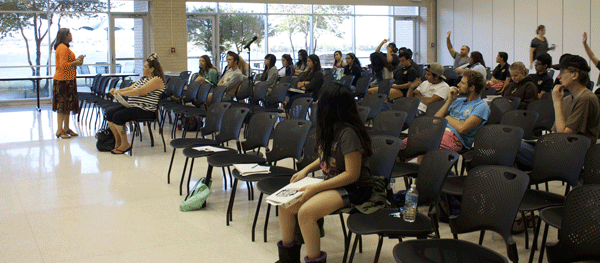
Audrey Werth/The Collegian
By Audrey Werth/reporter
Suicide takes nearly 40,000 lives a year in America. In Texas, there are one and a half times more suicides than homicides and an average of 7.5 deaths by suicide every day.
Lily Calzada, NW counseling and advising assistant director, spoke Sept. 10 about preventing suicide by asking questions and reaching out to individuals who may be thinking about suicide.
“You don’t have to be the one to know [what to do], you just need to know how to get your friend help,” Calzada said.
Social, biological and environmental risk factors add stress to a person’s life and may increase their likelihood of dying by suicide, Calzada said.
“When risk factors are high and protective factors are low, that’s when we are in the suicidal zone,” she said.
John Birchen, a youth minister and NW student, found that the presentation provided helpful information he could use with his youth group.
“I had one youth in my group who actually saved another member from suicide, so I definitely want to be more aware of what’s going on with my students,” he said. “This presentation definitely gave me a good foundation.”
Calzada urged students not to fear asking a friend if he or she was thinking about suicide.
“You might think it is putting the idea in their mind, but they already have the idea if they are really thinking about it,” she said. “Instead, it gives them a sense of relief that someone is finally hearing them.”
Calzada told the students if they think someone sounds suicidal but then tells them not to worry, they should challenge that person.
“They might not even know they are talking about suicide,” she said. “You challenge them and say, ‘It really sounds like it to me. Let’s be careful with our words.’”
As for the importance of including in-depth information about biological and mental dysfunction, Calzada said, “I think that that would be more associated with depression and mental illnesses, but when we’re talking about suicide, depression is just a small part of it.”
Calzada said depression and its related factors were topics for another discussion.

























